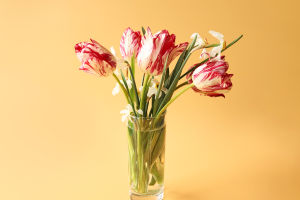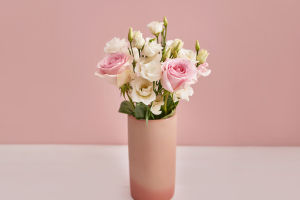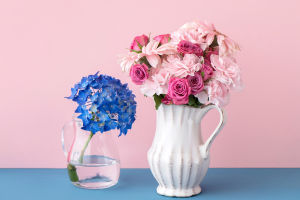Floral art is not merely a craft; it also represents a country's cultural traditions, aesthetic tastes, and historical heritage.
Different countries display their love and respect for flowers in unique ways, creating distinct floral styles.
This article explores the floral traditions of four countries—France, Japan, the Netherlands, and Brazil—each of which has brought its flair to the world stage.
Let's begin with France. French floral art is renowned for its elegance and romance. The history of French floral design can be traced back to the Middle Ages, particularly during the Renaissance period. The essence of French floral art is embodied in the "Parisian style," which emphasizes symmetry, fluidity, and delicate arrangements. Flowers are carefully selected, and their shapes are beautifully crafted with intricate combinations.
French florists tend to use a variety of traditional flowers, such as roses, lilies, violets, and irises, creating a uniquely French romantic atmosphere. Furthermore, French floral art also incorporates modernist elements, particularly in floral exhibitions and competitions held in Paris, where innovation and artistry are highly valued.
Next, we move on to Japanese floral art. Japanese floral design is an ancient art form that deeply reflects Japan's reverence for nature and the changing seasons. The most distinctive schools of Japanese floral art are "Ikebana" and "Sogetsu," each representing different aesthetic pursuits.
Dutch floral art, on the other hand, is famous worldwide for its vivid and unique color combinations. The Netherlands is the largest flower exporter globally, particularly famous for its tulips. Dutch floral art is influenced by the Dutch Golden Age of the 17th century, during which the Dutch nobility and wealthy merchants developed a profound love for flowers.
The hallmark of Dutch floral art is its vibrant, layered color schemes. Florists pay great attention to the arrangement and layering of flowers, often using rich color combinations to express artistic sensibilities. Another notable feature of Dutch floral art is the abundance and diversity of flowers used.
Dutch florists excel at working with large quantities of flowers, especially tulips, roses, and lilies, creating visually impactful works. In the Netherlands, flowers are more than mere decorations—they are cultural symbols, reflecting society’s longing for prosperity and a beautiful life.
Finally, let's explore Brazilian floral art. Brazil is known for its rich tropical plants and vibrant colors. Brazilian floral art emphasizes passion, freedom, and creativity, often using bright, uniquely shaped flowers.
Tropical flowers from Brazil, such as the bird of paradise and Brazilian chrysanthemums, are often central elements in floral creations. Brazilian floral art is bold and avant-garde, blending Brazil's folk culture and festive traditions. In Brazil, flowers are not just decorative; they are a means of expressing passion and rhythm.
In conclusion, floral styles from around the world are distinct in form, technique, and cultural background. Floral art is more than just a beautiful decoration—it is a messenger of culture, history, and emotion. Each floral tradition represents a unique way of life and artistic expression, and they interact and influence each other globally, creating a more vibrant floral world.


